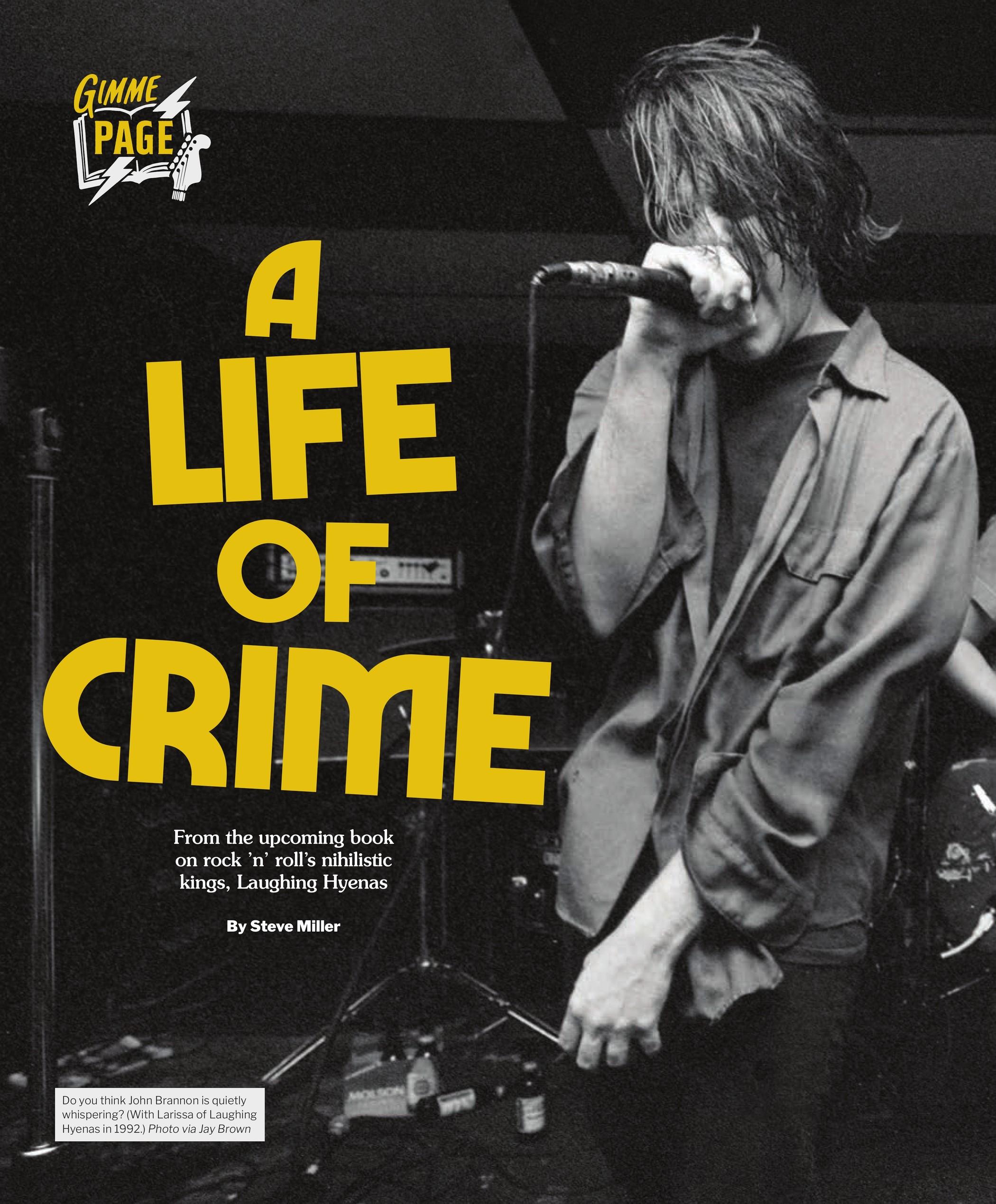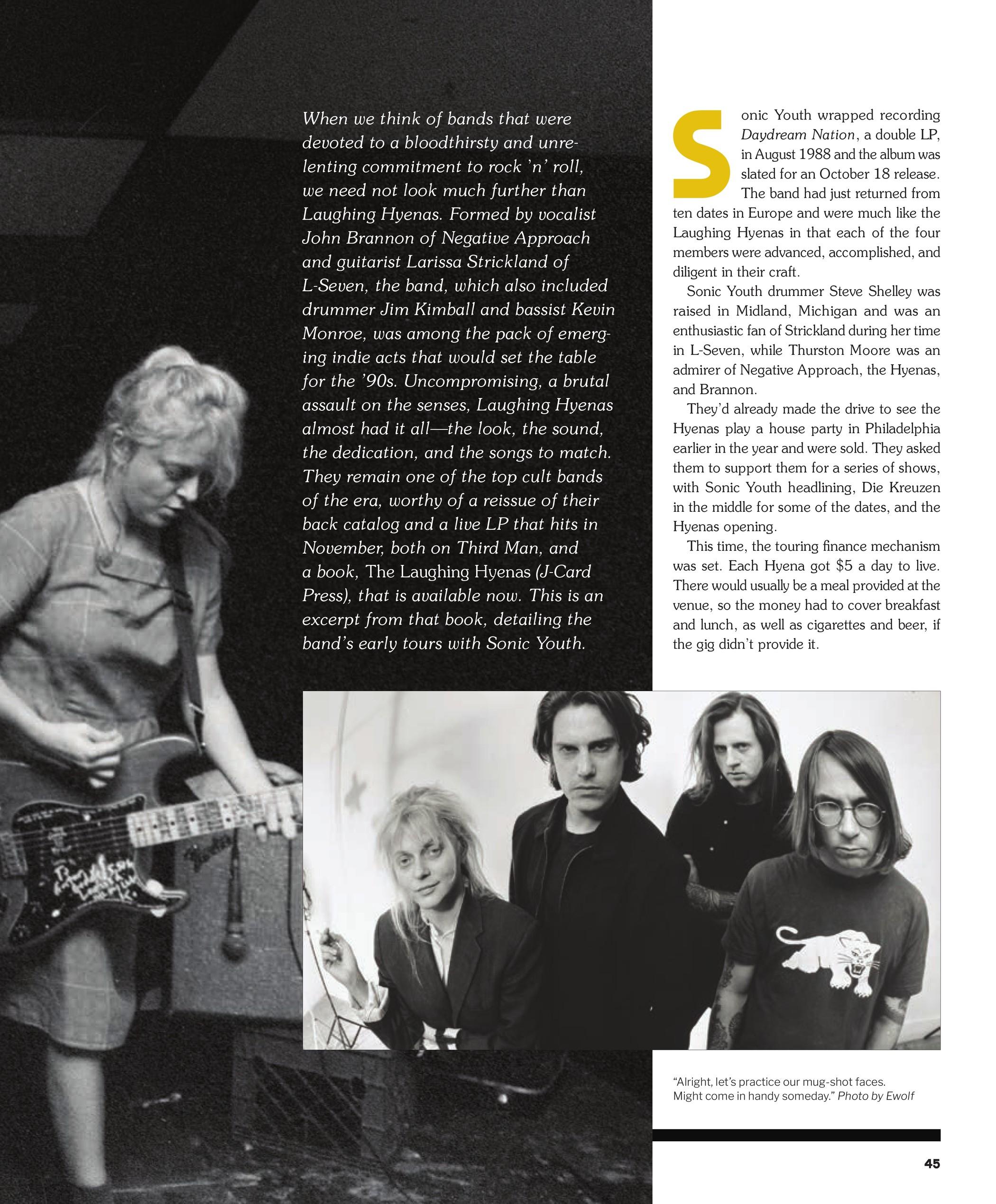Gimme Page
A LIFE OF CRIME
From the upcoming book on rock ’n’ roll’s nihilistic kings, Laughing Hyenas


When we think of bands that were devoted to a bloodthirsty and unrelenting commitment to rock ’n’ roll, we need not look much further than Laughing Hyenas. Formed by vocalist John Brannon of Negative Approach and guitarist Larissa Strickland of L-Seven, the band, which also included drummer Jim Kimball and bassist Kevin Monroe, was among the pack of emerging indie acts that would set the table for the ’90s. Uncompromising, a brutal assault on the senses, Laughing Hyenas almost had it all—the look, the sound, the dedication, and the songs to match. They remain one of the top cult bands of the era, worthy of a reissue of their back catalog and a live LP that hits in November, both on Third Man, and a book, The Laughing Hyenas (J-Card Press), that is available now. This is an excerpt from that book, detailing the band’s early tours with Sonic Youth.

